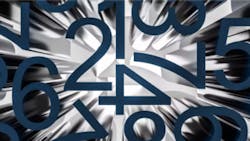Who is looking at your office billing for all types of sedations? Who sets the standards? The Joint Commission is not specific regarding the required elements of the assessment. The expectation is that the assessment is based on established or recommended professional practices. Examples of professional organizations that provide guidance for clinical practice are the American Society of Anesthesiologists (ASA), American Association of Nurse Anesthetists, and the American Dental Association (ADA). Typically, the assessment includes vital signs, status of the airway, and response to any preprocedural medications.
- Moderate sedation: This organizations listed above determine who is qualified to perform the assessment consistent with competencies of staff, scope of practice, rules and regulations, and state.
- Deep sedation/regional blocks/general anesthesia—These must be administered by an anesthesia provider with medical staff privileges in accordance with hospital policy and state scope of practice laws. This assessment may not be delegated to a non-privileged individual.
- All codes belong to the ADA and the AMA.
Related reading
Billing to medical insurance: In-network versus out-of-network
What makes it medical? A basic guide to medical vs. dental procedures
The difference between dental billing and medical billing
Dental billing
D9215: Local anesthesia in conjunction with operative or surgical procedures.
D9210: Local anesthesia not in conjunction with operative or surgical procedures. These are the available CDT codes to report some local anesthesia services. Benefit plan limitations may exclude separate reimbursement benefits for local anesthesia, but most consider it part of the treatment.
D9230: Analgesia, anxiolysis, inhalation of nitrous oxide. (Anxiolysis is defined as "reduction of anxiety utilizing a pharmacologic agent such as Benzodiazipine or nitrous oxide.") This code refers to anxiety-controlling drugs. It may be a covered dental benefit when reported with oral surgery procedures. It usually is not a benefit for the use of nitrous oxide/oxygen sedation associated with routine dental procedures. (If you are billing this to a dental claim and it is a noncovered procedure, look at your state laws since more than 28 states say you can now charge your fee for this service.)
Always provide a pre-visit screening of sedation patients.
D9912: Pre-visit patient screening. Document a patient’s health status prior to or on the scheduled date of service to evaluate risk of infectious disease transmission if the patient is to be treated in the dental practice. This must be used at the time of billing. Go over health history and if needed contact their medical provider to review any issues you may encounter.
Medical billing
Pre-visit patient screening for medical is medical code Z01.818: Encounter for preprocedural examination nitrous oxide.
Both dental and medical billing require that the following information be documented:
What you need to know prior to the visit:
- Age of patient since there are different codes for patients under 5 and over 5 to adult
- Who is performing the sedation? The same doctor who is providing treatment or a different provider?
- Health of the patient
Here are the qualifiers to match these questions when billing medical. With dental they must be in your chart notes.
Health of the patient–ASA physical status
ASA I: Normal, healthy patient
ASA II: Mild systemic disease (well-controlled and no functional limitations)
ASA III: Severe systemic disease (controlled with no immediate danger but some functional limitations)
ASA IV: Severe systemic disease that is a constant threat to life (poorly controlled or at end stage)
ASA V: Patient not expected to survive longer than 24 hours without surgical intervention
ASA VI: Brain dead (maintenance for organ harvesting)
ASA E: Emergency operation of any variety
These codes will also be needed when billing, and you must know the patient’s age and health. These match the standard setup from the ASA. Most insurance companies use this list for office or clinical settings.
Physical status modifiers are represented by the letter ‘P’ followed by a single digit from 1 to 6 as defined in the following list:
- P1: A normal healthy patient
- P2: A patient with mild systemic disease
- P3: A patient with severe systemic disease
- P4: A patient with severe systemic disease that is a constant threat to life
- P5: A moribund patient who is not expected to survive without the operation
About the Author

Christine Taxin
Christine Taxin is the founder and president of Links2Success, a practice management consulting company to the dental and medical fields. Prior to starting her own consulting company Ms. Taxin served as an administrator of a critical care department at Mt. Sinai Hospital in New York City and managed an extensive multi-specialty dental practice in New York.
